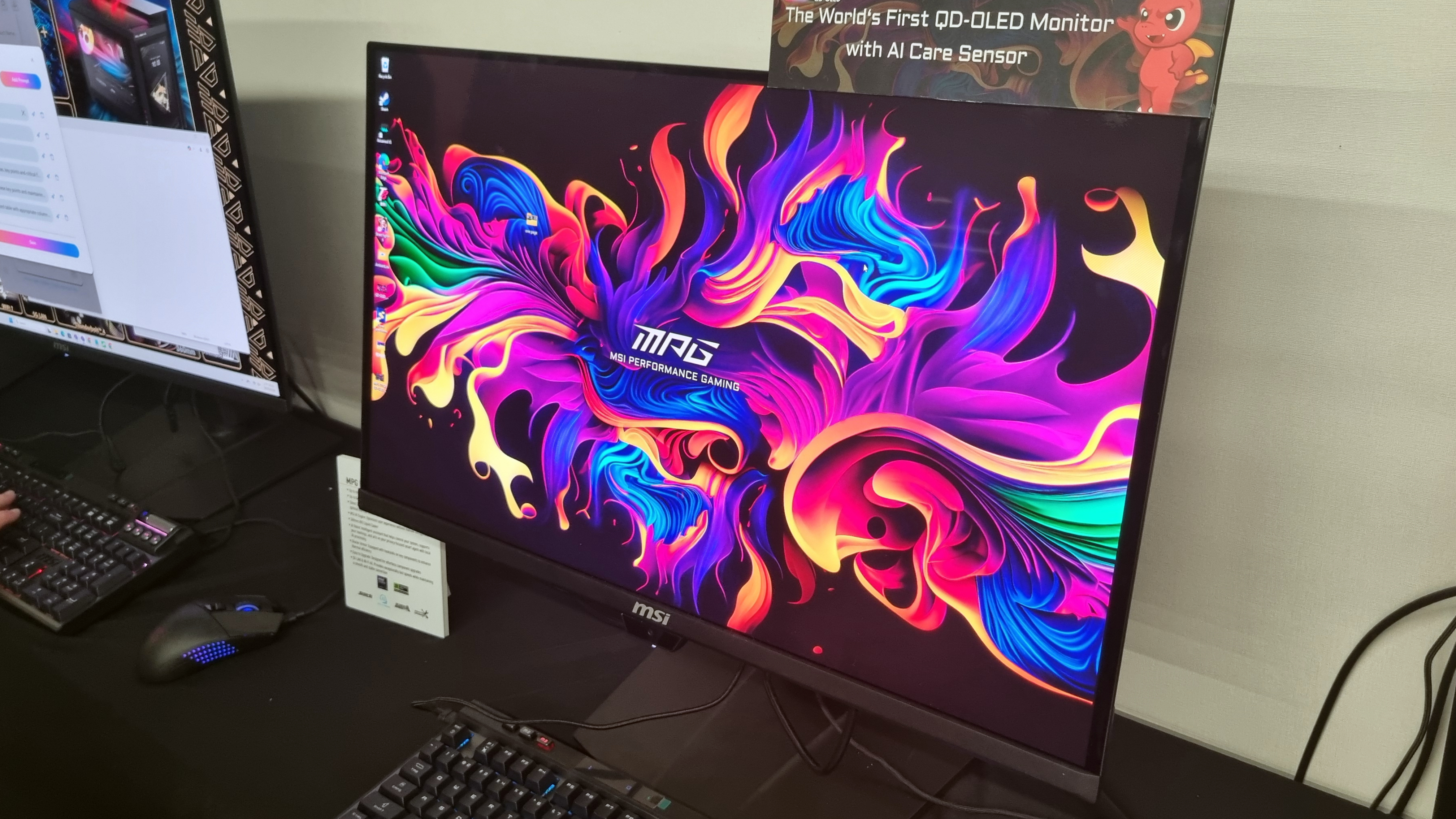
The Turtle Beach Kone II Air Mouse Has A Lot to Offer, With Some Compromises
Outside of having some of the best gaming headsets, Turtle Beach’s roster of peripherals has expanded over the years to include mechanical keyboards, high-end controllers, and gaming mice. I recently reviewed the Kone II and was impressed with its comfort and versatility, and its wireless version in the Kone II Air shares an identical build, but with some slight differences aside from cutting the cord. Unfortunately, most of those changes make it less desirable than its wired counterpart, even though it still strikes a decent balance between ergonomics and performance.
Turtle Beach Kone II – Design and Comfort
The Kone II Air still rocks the somewhat garish design with sharp contours and RGB strips along the sides to let you know this is a gaming mouse. By no means is it obnoxious, though – especially because it is appropriately shaped to fit my hand like a glove. One thing about its design is that I just wish the RGB strips were more transparent since the lighting looks a bit muddied from the slightly opaque material.
What’s more important is that it’s a comfortable mouse to hold, mainly with a full-on palm grip. This is one of the larger gaming mice and with its added weight, coming in at 110g as opposed to 90g for the wired version, it’s a little more challenging to wield in claw- and fingertip-style grips. This highlights one of the small yet noticeable differences between the two models – the Kone II Air’s added weight also contributes to a change in weight distribution. It isn’t quite as balanced since most of the added weight is on the backend of the mouse, making it less ideal in gaming situations where tight control of the mouse impacts performance. While it’s not exactly a dealbreaker, it’s worth mentioning as a notable difference.
The Kone II Air is an ergonomic workhorse that’s capable for gaming, striking a respectable middle ground.
The deep-set grooves work well for letting your thumb and pinky comfortably hold the mouse, and with just enough stickiness to the mouse’s material, holding onto the Kone II Air feels right. The mouse’s wider base adds to stability but it also works as extra surface area for your thumb to rest, so you don’t need to fully grip the mouse when using it in a more casual setting, which helps take some of the pressure off in long-term use.
The two side buttons are positioned and shaped the same as they are on the wired Kone II, which is to say they’re easy to use thanks to a slight gap between the two to help distinguish one from the other. The extra button below the thumb grip is the Easy Shift feature by default – when held down, your other mouse buttons double up for other functions, which you can program in the Swarm II software. It’s super useful for getting more utility out of your mouse if you prefer mapping in-game actions to mouse buttons or want more shortcuts for productivity or work environments. This additional thumb button is easy to hit, but not so much that you’ll accidentally activate it when using the mouse normally.
Looking to upgrade your keyboard, too?
Check out our roundup of the best gaming keyboards!
Another neat feature of the Kone II mice, wired and wireless, is the “4D” scroll wheel, which means you can flick it left or right as additional inputs. Like the thumb buttons, it’s intuitive to actuate and isn’t prone to errant presses. One difference with the Kone II Air is that instead of up and down DPI buttons by the scroll wheel, there’s a DPI cycle button and a switch to swap between traditional tactile and frictionless scrolling. The tactile scrolling is quite a bit stiffer on the Kone II Air, and while I wouldn’t use the frictionless option normally, it’s well-implemented as a feature. However, the scroll wheel itself is loose in place regardless of which setting you use, so you can feel it jiggling as you’re swiping the mouse. It’s more of an annoyance than something that impacts performance.
As an ergonomic workhorse, it’s nice that the Kone II Air also includes Bluetooth connectivity, making it versatile and suited for casual use. There’s also a convenient slot on the bottom side of the mouse to store the 2.4GHz wireless dongle so you can still get the best responsiveness even when taking it on the go.
Turtle Beach Kone II – Software, Customization, and Battery Life
Like all of Turtle Beach’s gear, the Kone II Air uses the Swarm II app, which is a streamlined software program that’s simple to use. Programming each button and setting the button mappings for the Easy Shift feature is straightforward since the app’s UI is clean and responsive, clearly laying out your options despite them seeming pretty sophisticated at first glance.
You can customize the RGB profile which is pretty neat for the Kone II Air considering it has five distinct lighting zones (one on the scroll wheel and two on each lighting strip), letting you set some cool looking color patterns – I just wish the material on the RGB strips let it shine more. You’ll also be able to set five DPI points up to 26,000 (in increments of 50), set debounce time and polling rate (which should be left at the max of 1000 Hz), and tweak the rest mode timer to save battery.
In terms of battery life, the Kone II Air is rated to last up to 350 hours via Bluetooth and 120 hours with 2.4GHz wireless, but those are under ideal conditions. After fully charging the mouse and using it three days straight for work and gaming (roughly accounting for 40 hours), the battery life was sitting around 60% which I’d chalk up as a win considering I had the RGB lighting on full blast and was using a rather modest rest mode timer.
Turtle Beach Kone II – Performance
The Kone II Air is comfortable and focused on providing an ergonomic experience while holding up in gaming, and all its features make it a well-rounded mouse. But when solely accounting for gaming, its performance depends on what you’re playing and the intensity of the gaming scenario. The Kone II Air uses the Owl-Eye 26K optical sensor and it’s fast and accurate, and the Titan optical switch for its left and right mouse buttons are springy and responsive. While there were compromises to consider with the wired Kone II, some of those are exacerbated by the changes made for the wireless Kone II Air.
Again, it’s not a bad mouse for shooters, but I wouldn’t recommend it for competitive gaming. The ergonomic design also comes at the cost of being more nimble, since the wider base and added weight means you’re less agile. Such is the case with even another favorite in the Logitech G502. With the Kone II Air in particular, the extra 20g in weight and the slight imbalance you feel when lifting it up and swiping holds it back from being ideal for fast-paced shooters. It may seem like a nitpick, but when compared to other FPS-minded mice such as the Razer Deathadder V3 or Glorious Model D 2, for example, the difference can be stark. I didn’t have issues with the sensor or buttons because they’re still high performance parts, but if I’m diving into ranked matches in Valorant or Counter-Strike 2, I’m not going to use the Kone II Air.
I frequently swapped between the Kone II and Kone II Air when playing Final Fantasy XIV, and since I don’t need to have pinpoint accuracy in moments where split-seconds matter, the mouse held up really well. Being able to map so many frequently used actions to the extra buttons was clutch, even though I tend to rely on keyboard bindings for most things. Tinkering with Easy Shift to get more utility took some getting used to, but I definitely saw the benefits especially in an MMORPG. You’d probably consider something like the Corsair Scimitar if you want to go all-out on an MMO-centric mouse, but again, the Kone II Air excels in striking a balance between various use-cases.
It’s not a bad mouse for shooters, but I wouldn’t recommend it for competitive gaming.
As I mentioned at the top, I’d only recommend using a palm grip with the Kone II Air given its size and weight, which will also help mitigate its somewhat odd weight balance. And while its PTFE mouse feet help it glide across any kind of surface, the extra weight adds a bit more friction that can feel like dragging a hulking mouse around. These are the kinds of compromises that come with the territory of using a larger ergonomic-style mouse with a ton of features on top.
Purchasing Guide
The wireless Turtle Beach Kone II Air is available for $119.99 at retailers such as Amazon and directly from Turtle Beach. You can get in both black and white color schemes.








